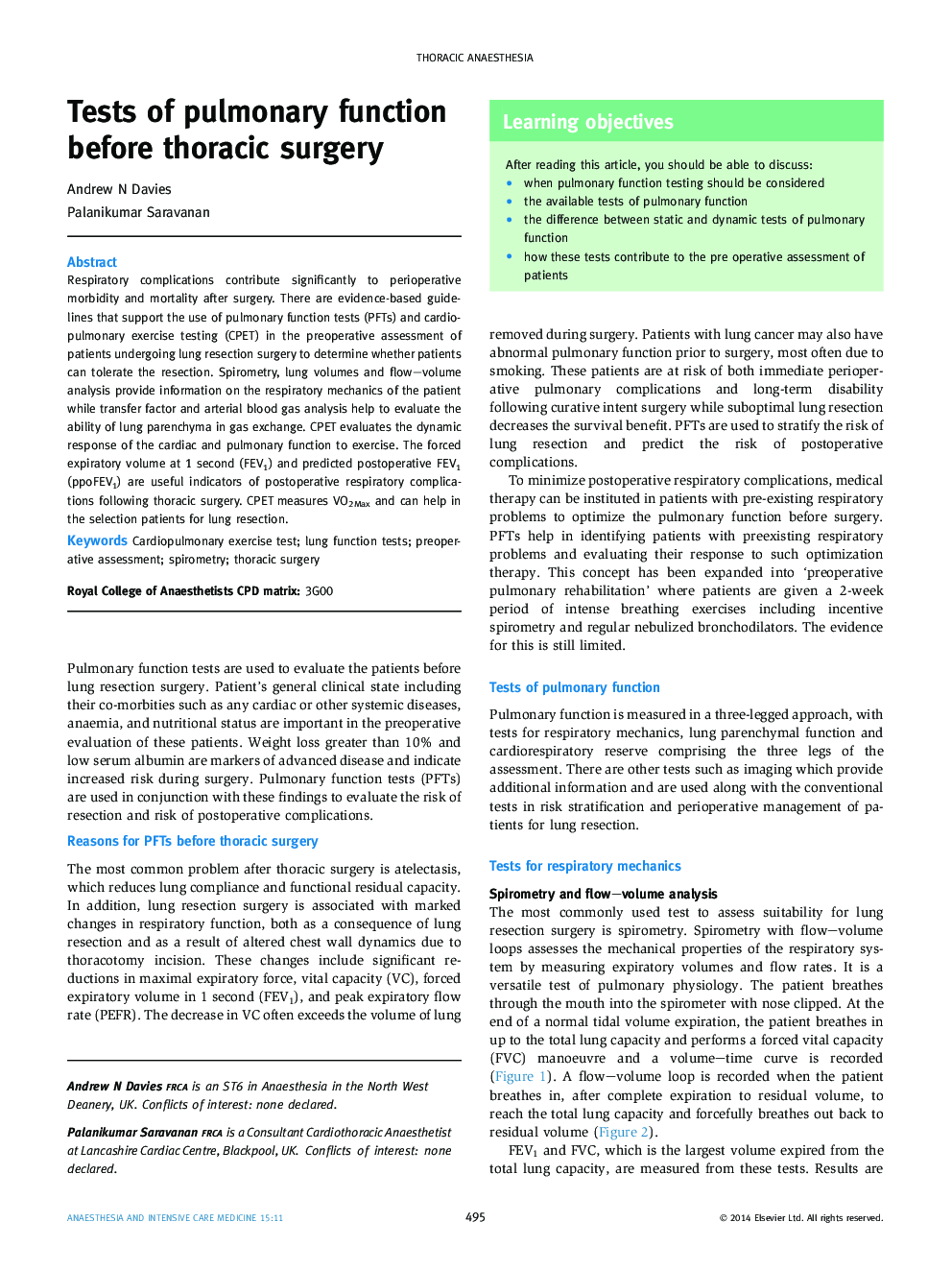| کد مقاله | کد نشریه | سال انتشار | مقاله انگلیسی | نسخه تمام متن |
|---|---|---|---|---|
| 2742252 | 1148594 | 2014 | 4 صفحه PDF | دانلود رایگان |
Respiratory complications contribute significantly to perioperative morbidity and mortality after surgery. There are evidence-based guidelines that support the use of pulmonary function tests (PFTs) and cardiopulmonary exercise testing (CPET) in the preoperative assessment of patients undergoing lung resection surgery to determine whether patients can tolerate the resection. Spirometry, lung volumes and flow–volume analysis provide information on the respiratory mechanics of the patient while transfer factor and arterial blood gas analysis help to evaluate the ability of lung parenchyma in gas exchange. CPET evaluates the dynamic response of the cardiac and pulmonary function to exercise. The forced expiratory volume at 1 second (FEV1) and predicted postoperative FEV1 (ppoFEV1) are useful indicators of postoperative respiratory complications following thoracic surgery. CPET measures VO2Max and can help in the selection patients for lung resection.
Journal: Anaesthesia & Intensive Care Medicine - Volume 15, Issue 11, November 2014, Pages 495–498
